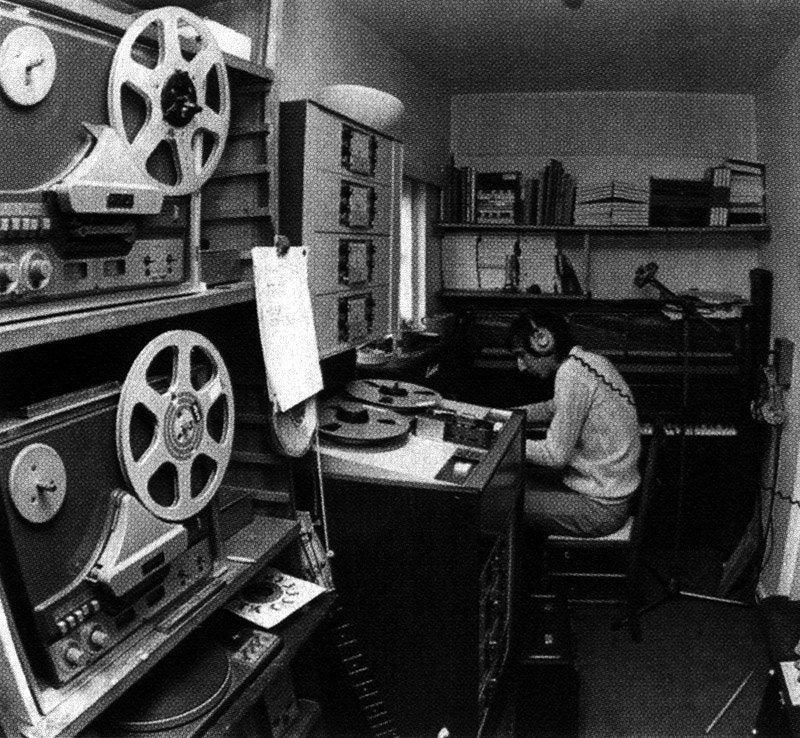Virtual Mentors
(this is a repost of an original blogspot post i made in 2007)
I got into studio recording, engineering and production after purchasing a Tascam Porta One four track cassette recorder from Manny’s in New York City in 1985. Because recording has always been a process of trying to maintain ‘right brain’ musical integrity while not over-using the necessary ‘left brain’ engineering side, the musician/engineer must avoid reinventing or perhaps even fully understanding the wheel. A intuitive shortcut is needed, something to fully grasp only what you will initially need and actually use. One way to achieve this is to have a great mentor. Two SF Bay Area people were key mentors in my progression: great audio tech, friend and fine musician Lawrence Fellows-Mannion has saved me countless hours over the years with his advice and guidance, and high end audio gear engineer/specialist Steven Jarvis is another person who helped so much when I made the leap to the professional.
Of course, good mentors are usually very busy, so you gotta have some virtual mentors too. Pete Townshend was one. Besides his great musicianship, Pete was one of the first to grasp the advantage and power of the home recording studio. His Scoop ‘demos’ LP was an early inspiration – especially the tantalizing gear pics and recording details in the liner notes.
Nowdays, we have the internet and look what I found today! An amazingly detailed interview (sadly EQ magazine is offline) with Pete about recording that covers his many studios and methods from the early monophonic to the present polyphony. If you ever wanted a superchared version of the Scoop liner notes, this is it. The snippet below is some of the best advice that could be offered to anyone concerned with making a better studio recording at home:
For the composer, computer tools present a dilemma. For most people, creative ideas emanate and are nurtured on the right side of the brain. However, technical matters are dealt with on the left. So one immediate problem is that before we can get creative with a computer we have to do things like organize our tracks, create a file, make sure we have somewhere to store it, etc. Being able to just run a tape machine (analog or digital) on a whim, always set up and ready to go, is a good thing to have in your life. Or you could have something like an Edirol R09 digital recorder handy. Try to stay in the right side of the brain until the music is properly shaped. Computers (and compact microprocessor controlled digital studios) are wonderful to arrange and modify what you have composed. For me, tape machines offered a way for me to compose, not to record great music, but merely to ‘write it out’ as I had no other way of doing it.
Of course those people who work entirely within the computer environment, using loops, MIDI, samples and reflex-driven software like Ableton Live, can get used to making very frequent jumps from one side of the brain to the other. But the music they make tends to sound a little different to the kind of music most of us feel reflects something of the heart. There are many exceptions. This is not a rule, but I often urge musicians I meet who love to work with MIDI software to ‘try some of the old methods out’ however, getting a decent tape machine is not easy, nor is it cheap.
So remember, start with a good sounding space. And if it sounds bad, fix that first. You may just have to deaden it right down. Next, buy at least one truly great microphone. Next, buy at least one truly great mic preamp. If you can, buy a single module from some old board, an API, a Neve, or whatever. If not, buy a new ‘classic’ channel, or something as good as you can afford. Next, pick your recording medium, and use your brain. If you start with tape, use nothing less serious than a reel-to-reel Revox, TASCAM or Fostex of some kind. If you start with digital hard disk, try some test sessions at different sample rates and bit depths – you may be surprised that your system sounds better at lower quality rather than higher because it doesn’t have to work so hard. So, use your ears if you can when making these assessments; pretend to be one of those old jazz guys who could really hear. I would recommend using a single pair of earphones for some of these kinds of tests. Pick the ordinary ones used in studios. Use your speakers just for playbacks of these tests and checking detail. If you can afford none of these things, buy a small tape Portastudio. Four tracks will sound better than eight. Remember that what you are doing is using a medium, not a modifier.

So cool. now you know why i bought a 3M M23